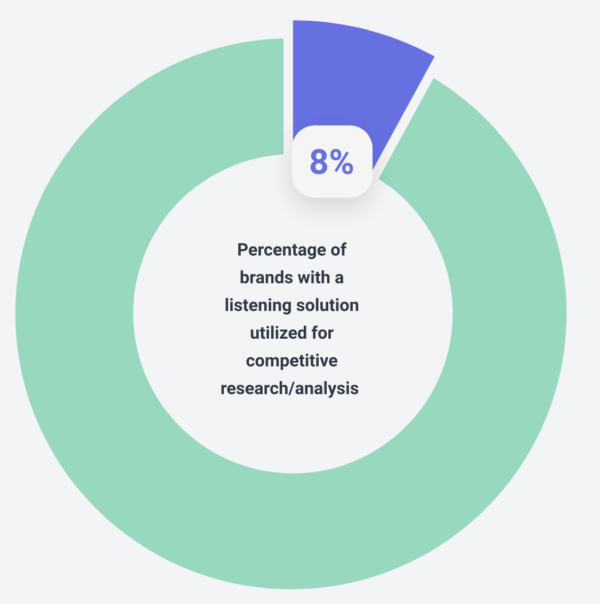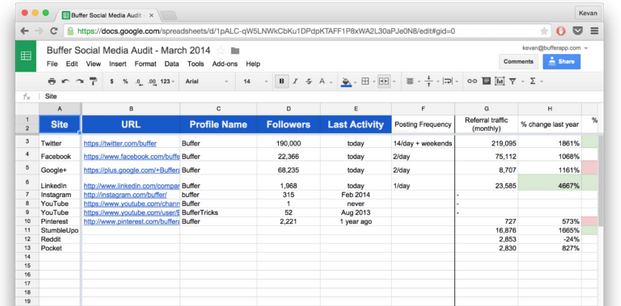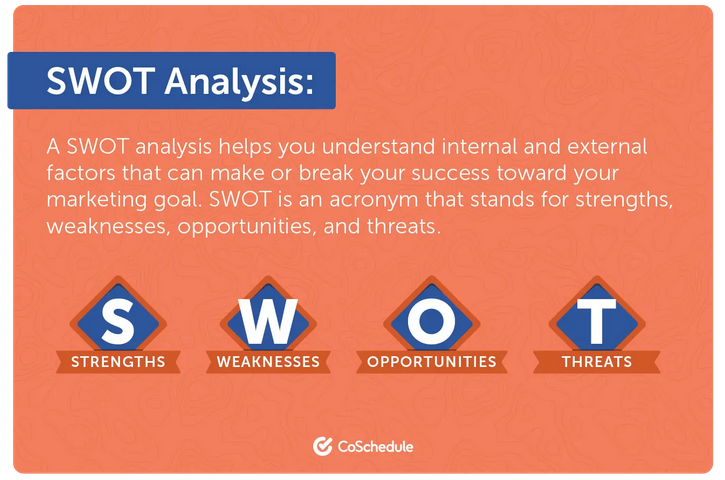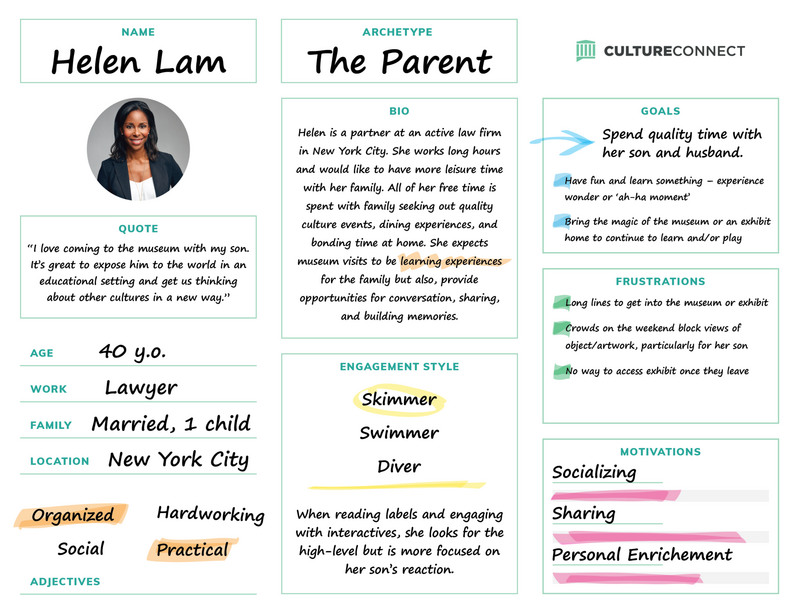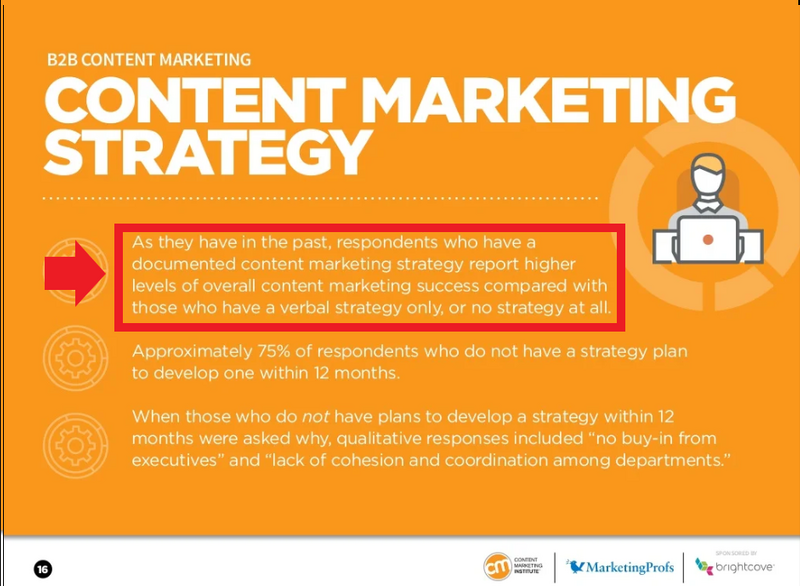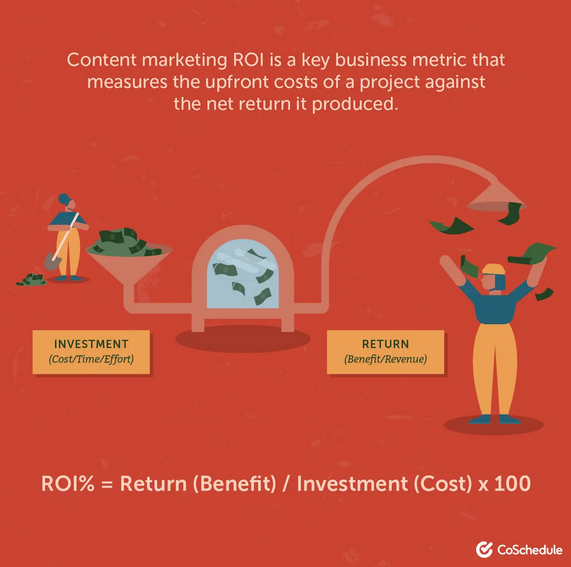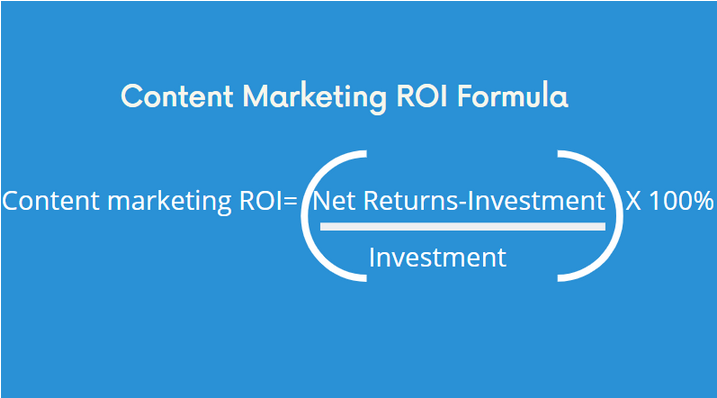Museum Marketing: Your Go-to Guide on How to Market a Museum
Do you ever feel overwhelmed thinking about how to market a museum?
You don’t know where to begin nor what steps to take to create a marketing plan that tackles your biggest challenges.
After a quick search on Google, you feel bamboozled by the plethora of information dominating the web.
The struggle is real.
But you’re not alone!
44% of organizations don’t have a clearly defined digital marketing strategy. Many companies - including museums - are missing out on the chance of growing their brand authority, building visibility, and increasing their revenue. (Smart Insights)
Conversely, 75% of marketers enhanced their company’s credibility and trust with digital marketing tactics. (Content Marketing Institute, 2020)
By creating a results-driven museum marketing plan, you maximize your opportunities to:
Identify your target audience and ideal visitors.
Understand your competitors.
Define your USP (Unique Selling Position).
Set specific and measurable marketing goals.
Craft a clear plan of action.
With a strategic and consistent step-by-step approach to museum marketing, you’ll overcome the tough road to success.
Ready to achieve your biggest goals? Read through my ultimate, comprehensive guide to learn how to market a museum.
Are you running out of time? ⌚️ Click below to get a free checklist PDF summing up today’s post.
How to Market a Museum: The Guide - Table of Contents
What Is Museum Marketing? What Is Its Role?
Why Do You Need a Marketing Plan For Your Museum?
9 Steps to Building an Effective Museum Marketing Plan (With Tools)
What Is Museum Marketing? What Is Its Role?
Museum Marketing is essential to the growth, sustainability, and longevity of your institution.
It’s a strategic approach aimed at:
Engaging with new and wider audiences.
Singling out the visitors’ needs and pain points.
Customizing the programs, events, and services you offer.
Providing accessible and diverse experiences (offline and online).
Communicating the museum’s mission and values.
Museum marketing is NOT just about advertising and selling.
It’s the process describing how to understand your market and the methods for influencing profitable customer action.
It outlines effective ways to encourage people to visit your museum and come back multiple times.
Learning from other arts organizations with similar goals, measuring marketing activities that attract the audience, and constantly refining your approach for better performance is key to knowing how to market a museum.
The more you learn about the people you’re speaking to, the easier it will be to promote yourself and build your authority.
Think about it…
If you provide audiences with something they value and desire, such as digital events or immersive experiences, you’ll increase your chances of boosting brand awareness, museum attendance, and income.
It’s a win win!
But to get those results, you need to have a strategic marketing plan up your sleeve.
Why Do You Need a Marketing Plan For Your Museum?
78% of museums are focused on increasing digital services and strategies. (NEMO, 2021)
With the Covid-19 crisis, 76.6% of museums have been rethinking their digital strategy to increase online presence and audience engagement; whereas 74.8% of institutions have already started or are planning to upgrade their digital offer and resources to raise their income. (ICOM)
A digital transformation can’t happen without a museum marketing plan in place.
It has a pivotal role in your business growth and financial sustainability.
But there’s more.
When you know how to market a museum, you…
Build trust and authority.
Generate brand awareness and new leads.
Actively engage with your audience and improve their experience.
Offer products and services in line with the public demand.
Drive visits, memberships, donations, and sales.
With the right mindset and a clearly outlined path, you’ll fulfill your goals and expectations.
Here are six core questions to start with for an effective marketing plan:
9 Steps to Building an Effective Museum Marketing Plan (With Tools)
It’s time to build your museum marketing plan in nine clear steps.
All are fundamental to the overarching success of your marketing efforts; if you skip any of them, you’ll risk compromising the entire process.
Do your homework first.
And results will come soon.
Let’s get down to the nitty-gritty of how to market a museum!
1. Content Audit: Analyze Your Existing Museum Content
Content Audit is a deep analysis of your website's content to pinpoint weaknesses and strengths.
It allows you to:
Identify outdated pages.
Find inaccurate information.
Weed out poorly performed pages.
Highlight high-performing pages.
Analyze poorly-built SEO pages.
Overhaul content to increase search ranking.
Develop new content based on well-performing pages.
The aim is to fix potential problems and update the existing content to improve the life and health of your site.
From the website copy and images to social media posts and newsletters, audit whatever is best for you.
The key is to maintain the ongoing quality of the content.
But how do you do it?
First of all, define the metrics you want to measure:
Web traffic: refers to the number of visits to your website (“sessions”) and the effectiveness in attracting an audience.
Conversion rate: shows the number of visitors who, after clicking on a link in the website, take action on a page. (They turn into leads, and from there to customers.)
Brand reputation: highlights how people feel about your brand and what they think.
Keywords and ranking: shows how the pages rank for the keywords you’ve selected as important.
Bounce rate: indicates visitors who show up and immediately click away.
Load time: represents the amount of time it takes for a page to load and is directly related to the bounce rate.
Backlinks: refer to the links between your site and others. (They’re important in SEO strategies to increase your site reputation and exposure.)
Click-through rate: shows if your post is opened; if the reader clicked on a CTA; and if they turned into a lead or customer.
Metrics like these help you identify the success of a particular piece of content.
Create a spreadsheet on Excel to collect all the content (from your website, blog, social media, etc.) to analyze.
Basic overview of how to perform a content audit. (Moz)
Don’t overload it with too much data; keep it simple by adding only the metrics that interest you.
Gauge what content is performing well, what needs to be changed, and what to ditch.
Content auditing takes up a lot of time but is highly beneficial to your website growth - make sure to review and optimize your content periodically (every six months on average).
Recommended tools:
Screaming Frog for a total page download and manual review of the site content. (It can audit up to 500 links for free.)
SEMrush to crawl your website and get a customized report that shows the worst mistakes.
Google Analytics for an overview of your website performance and to collect data that will help you formulate your audit.
2. Social Listening: Explore Your Competitors’ Content
Social Listening is the process of researching and monitoring social media channels, websites, and forums for mentions of competitor brands, topics, themes, products, or marketing campaigns.
You optimize your overall museum marketing plan, adjust goals, and find new approaches with it.
Plus, you can run a deep analysis of the content created by competitors on their website and social media, including the audience’s perception of their brand (“sentiment”).
A strategic use of social listening helps you differentiate your museum’s content and improve your online presence - a golden opportunity since only 8% of brands utilized a listening solution for competitive research and analysis. (Socialbakers, 2020)
Dig deep into your competitors’ content:
Analyze their web pages and blog, with attention to the visuals (type, colors, quality, CTA buttons, etc.) and copy (tone of voice, blogging frequency, comments, etc.).
Study their social media channels (publishing schedule, post length, CTAs, engagement rate, etc.).
Subscribe to their newsletter to monitor what they offer and how their emails are structured (email frequency, topic, CTAs, visuals, etc.).
Search them on Google, forums, and social groups to assess their online visibility.
Collect all the data in a social listening report on Excel.
Items such as brand name, URL, date, audience’s comments and sentiment will be part of your file.
Example of a social media audit template. (Buffer)
Social listening is time-consuming, especially when it comes to competitor analysis.
To simplify the process, make a list of a maximum of 10 competitors and stick with it.
Recommended tools:
Pulsarplatform to track any type of content, including images and videos.
Brand24 to track brand mentions across social, news, blogs, videos, forums, podcasts, reviews, and more.
Quora to find information on several topics, including people’s comments and questions. (You need to create an account to access.)
3. SWOT Analysis: Understand Your Museum
A SWOT analysis encopasses your museum’s internal strengths and weaknesses, and identifies any external opportunities and threats that can affect your marketing goals.
Screenshot from: CoSchedule
It’s a brainstorming technique that helps you understand…
What differentiates your museum from the competition.
What resources you have and how you can use them for better results.
What improvements you can make.
What prevents you from seizing new opportunities.
What your competition is excelling at.
Gathering all this data will give you a clear idea of your starting point and a baseline to create your museum marketing plan.
Side note: when working on your opportunities and threats, do a PESTEL analysis for external factors (Political, Economic, Social, Technological, Environmental, and Legal) that could affect your institution.
Case study on the Museum of Kalamata, Greece. (Semantic Scholar)
The rule of thumb for SWOT analysis is to make the most of your strengths and opportunities, and mitigate your weaknesses and threats.
You’ll adapt to changing factors in your industry more easily and formulate better strategies for your business goals.
Recommended tools:
Lucidchart to automatically generate a SWOT analysis for free.
Canva for useful SWOT analysis templates.
4. SMART Marketing Goals: Set KPIs and Metrics
Your way to success gets easier when you define clear and realistic marketing goals.
First things first, it’s important to set your KPIs (Key Performance Indicators) and related metrics.
These two components often get confused:
KPIs are the long-term business objectives at the core of your museum marketing plan. They have the most impact in moving your organization forward and provide an insight into what to measure to accomplish your goals.
Metrics are performance measures that track and provide data on your business processes. They measure smaller, individual activities. (Dataflo)
KPIs have targets, a specific timeframe for reaching those targets, and are relevant to business outcomes. Metrics may or may not have all of the above.
One KPI has several metrics like this example:
But how do you set KPIs?
One simple method to ensure your business goals are attainable and on-track is to use the SMART framework.
The acronym stands for:
Specific: precise and detailed goals.
Measurable: quantifiable goals whose progress can be measured.
Achievable: realistic and attainable goals
Relevant: goals beneficial to the business growth and success
Time-bound: goals with a clear timeframe.
Tailor your KPIs to it and share the final report with your museum team and departments - everybody must align with it.
Review your KPIs on a weekly or monthly basis, since some of them may not be a priority anymore or lose their relevancy in the long run.
Recommended tools:
Geckoboard for professional KPI dashboards.
SimpleKPI for KPIs, metrics, and business data tracking.
5. Target Audience: Find Your People
A solid museum marketing plan revolves around your target audience: the existing and potential visitors you create your products/services around.
Having a deep understanding of who they are is essential to boost engagement, generate leads, and build authority.
Identify the audience that may be interested in what you offer, focus on their needs and pain points, and gather the intel you find (age, gender, job title, interests, etc.).
Several methods can support your research:
Social media monitoring.
Interviews (e.g. a mini-questionnaire to send out by email).
Surveys (easy quick surveys based on the data you want to get).
Forums (e.g. Quora or Reddit).
Conversations (e.g. conferences, meetings, events, email exchange, etc.).
Competitor analysis.
Take all that data and build your buyer persona.
Side note: audience research is a never-ending process since your target evolves over time - keep “listening” and add new details when necessary.
The buyer persona represents your ideal visitor/customer; it consists of an information sheet filled in with extensive notes on your audience.
Common information to include:
Name (for multiple personas, differentiate them with a unique name).
Photo (to better visualize your persona’s age and lifestyle).
Demographics.
Career, position, and salary.
Challenges/pain points.
Goals.
Likes and interests.
Favorite brands/publications.
Social media channels they use.
Example of a buyer persona. (Culture Connect)
Keep going back to the buyer persona as you tailor your marketing plan to the target audience’s needs, behaviors, and pain points.
Recommended tools:
Google Analytics to understand your existing audience’s demographics.
Google Forms to create free surveys.
Hubspot to make buyer personas.
6. Budget and Timing: Plan Your Goals
Every museum is different and has a different budget.
Budget model based on American museums. (Arenametrix)
Setting up your average marketing budget is crucial to make your goals come true.
Make sure to evaluate…
The resources available.
What needs spending and doing.
Who’s involved.
Any risk factors.
A timeline of the main actions to take.
Monitor the marketing process regularly to keep things on track, but also be flexible about making tweaks along the way.
Review your SWOT analysis and SMART marketing goals at least once a year to better cope with possible changes, threats, or new opportunities that could affect the initial budget.
Side note: while doing your cost estimation, consider stashing away an extra budget - what if you had to invest more money in a marketing campaign or create new visuals for your website?
Even with a limited budget, you can successfully market your museum.
Here’s how:
Be wise about your choices.
Research the market and look at your competitors.
Focus on what your audience wants, and ditch what’s not in demand.
Make the most of free marketing tools.
Create engaging content for your website, blog, newsletter, and social media channels.
Repurpose existing content in a more appealing way.
Collaborate with partners to promote each other’s programs and expand the audience reach.
But most importantly, use your money and time strategically.
Museum marketing requires a good deal of time and effort - no easy tricks or quick hacks will make you succeed overnight.
Be realistic about timing and gear up for up to six to twelve months of consistent hard work to reap the first results.
7. Brand Voice: Define Your Unique Voice
To build authority in the market and be immediately recognized by the audience, you need to define your brand voice and tone.
Brand voice refers to how you convey your museum’s identity and personality. It involves many aspects, from the language you use to the message you share through your marketing assets.
An established brand voice…
Sets you apart from the competition.
Enables you to build trust with potential visitors/customers.
Helps you make lasting connections with them. (They’ll know exactly who you are and what values you share.)
In addition, it’s important to define the tone.
Screenshot from: Coschedule
The tone of voice (TOV) determines how your content is written and perceived by the reader - What’s your word choice? What emotions do you share? What impact does your tone have on the audience?
While brand voice remains consistent, the tone may change according to the context of your messaging.
Nielsen Norman Group has identified four dimensions of TOV:
Funny vs serious.
Formal vs casual.
Respectful vs irreverent.
Enthusiastic vs matter-of-fact.
Take a look at these two examples:
1. British Museum: Clean. Straightforward. Serious.
The homepage messaging clearly reflects the authority of one of the most important museums in the world dedicated to human history, art, and culture.
2. Museum of Ice Cream, New York: Friendly. Funny. Warm.
The messaging is grabby and speaks directly to the heart of the readers.
Set brand voice and tone by identifying…
Your values and beliefs.
Your market position (what makes you unique).
What your audience’s problems and desires are.
How your audience speaks and communicates (to better empathize with them).
What your competitors’ tone is like.
Include all this information in a brand voice document to share with your team as a baseline for your whole marketing plan.
8. Content Planning: Organize Your Content
A content plan determines the content you want to create, on what channel, and when to publish it.
It supports your marketing activity in many ways:
Ensures content is unique and relevant for your readers.
Makes it easier for your team to create content.
Drives more traffic, engagement, and sales.
Helps you set your budget and resources effectively (you’ll know exactly what you need for your content development).
Makes you stay on top of timelines and tasks (use an editorial calendar).
According to Content Marketing Institute and MarketingProfs, companies who have a content plan are more likely to be successful than those who don’t.
When looking for new content ideas, ask yourself these questions:
Is the content useful for my target audience? What impact will it have?
Do the topics align with the general themes and messaging I want to share?
Does the type of content make sense for my audience?
Do I have seasonal or promotional time periods?
Have I found content opportunities that may interest my audience but aren’t currently present on the web?
What evergreen content can I create?
Do I have a content repurposing plan?
Gather as much data as possible on your existing and potential visitors to better understand their interests and anticipate the type of content they want to see:
Do social listening to find the themes that are more frequently discussed in your sector.
Look into your competitors’ content to discover trending topics that interest your audience.
Conduct market research and use web analytics tools (e.g. Google Analytics) to find audience information.
Next, set an editorial calendar to plan your content ideas and ensure a successful workflow.
Here’s what to include:
Timeline.
Type of content.
Topic and copy.
Marketing channel (based on where your audience is more active).
Target persona.
Author of the content.
CTA.
Editorial calendar example. (Hubspot)
Recommended tools:
AnswerThePublic for search listening.
BuzzSumo to generate ideas and create high-performing content.
Airtable to plan and organize your content.
9. Content Marketing ROI: Measure Your Return On Investment
Content marketing ROI is a percentage showing the revenue made from content marketing, compared to the time and resources you invested in it. (CoSchedule)
The ROI formula helps you track costs and benefits generated from your content marketing activities.
You can determine if your efforts are contributing to your museum’s growth and estimate the budget to invest in ongoing and future initiatives.
Consider these three key factors:
Costs: how much will you spend in content marketing? What resources do you need to produce content?
Usage: are you properly using all the content you’ve planned in your strategy?
Performance: what results is your content marketing generating? What impact does it have on your business growth?
The easiest formula for calculating your ROI is the return minus total investment, divided by investment. The result is expressed as a percentage by multiplying it by 100.
Screenshot from: Crowdfire
Dr. John H. Falk states that a good, overall ROI in both the for-profit and non-profit cultural field is about 10%, or a return of $1.10 for every $1.00 spent, with anything over 20% considered excellent.
A case in point is the small Nebraska History Museum: with an annual budget of around $600,000, it has generated value on the order of $10,000,000, resulting in 16,667% ROI.
Use the ROI to uncover what you’re doing right and measure it to make better decisions for your content marketing projects.
Recommended tools:
Hootsuite to track and improve ROI.
Hubspot to monitor content marketing ROI and KPIs.
Parse.ly to understand content performance and measure ROI.
How to Market a Museum: The Guide to Build a Killer Museum Marketing Plan
You made it! 👏
At the beginning of this blog, you were unsure about how to market a museum and what the best approach to museum marketing was.
Now you have the methods - and tools - to devise a results-driven marketing plan for your museum in nine concrete steps.
A few takeaways:
Museum marketing is an ongoing process that requires time, consistency, and patience.
Tailor your marketing plan to your audience's needs and desires.
Monitor, assess, and review your marketing activity on a regular basis and change approach if need be.
All museum members should align with your marketing goals.
With this guide at hand, you’re all set to build a killer museum marketing plan! 🚀
Looking to take your art business to new heights?
Do you find yourself struggling to reach a wider audience and make your mark in the art world?
Look no further! I’m here to assist you in leveraging the incredible potential of content marketing to grow your art business like never before.
As an experienced content marketing professional, it’s my mission to help art brands transform their creative work into thriving business endeavors.
Content marketing is an incredibly powerful tool that, when harnessed effectively, opens doors to limitless opportunities for success. By creating compelling and engaging content, you’ll captivate your target audience, increase your brand visibility, and significantly boost your sales.
Whether you're a well-established brand or just starting out, I’m ready to guide you through the world of content marketing and craft a tailored strategy that aligns with your unique vision.
If you're ready to take your art business to the next level, reach out to me!









